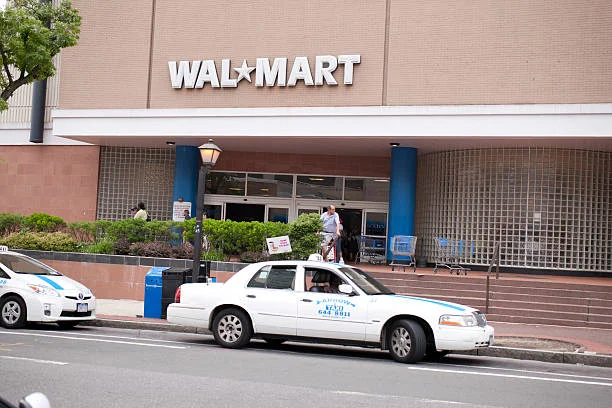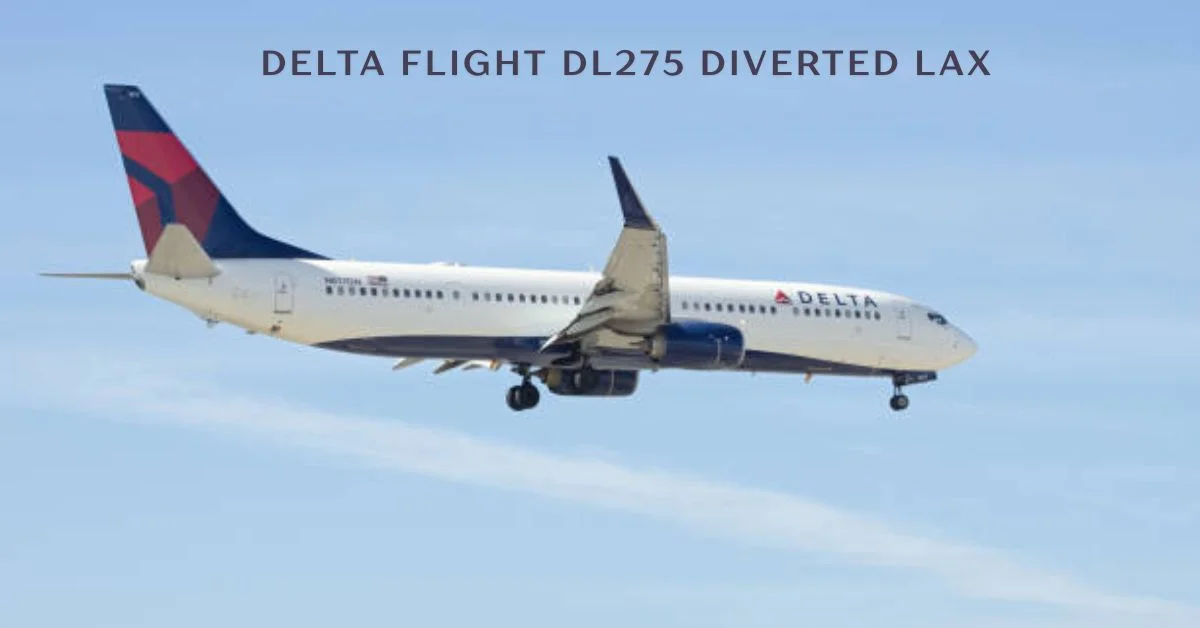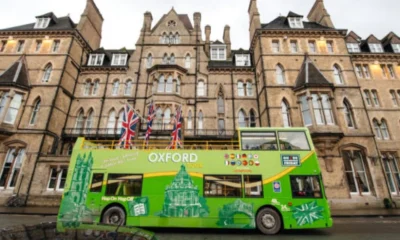News
Kentucky Walmart Police Presence: Strengthening Security in Retail Hubs Across the State

Introduction to the issue of crime in retail hubs
Crime in retail hubs has become a pressing issue, impacting both businesses and consumers alike. With thefts, vandalism, and other disturbances on the rise, many retailers are taking steps to enhance security measures. One significant move comes from Walmart—a staple in Kentucky’s shopping landscape. The company is ramping up its police presence across stores statewide to ensure safety for customers and employees.
But what does this mean for everyday shoppers? How will increased law enforcement affect the overall shopping experience at Walmart? Let’s delve into this initiative that aims to bolster security while addressing concerns from all angles.
Walmart’s step toward strengthening security through added police presence in Kentucky
Walmart has recently taken a proactive stance in Kentucky by ramping up police presence in its stores. This decision comes amid growing concerns about crime rates in retail environments.
The move aims to enhance safety for both employees and shoppers. By collaborating with local law enforcement, Walmart hopes to deter criminal activities that can disrupt the shopping experience.
Officers will be stationed at select locations, making their presence known without being intrusive. The intention is not just about security but fostering a sense of community trust.
This initiative reflects Walmart’s commitment to creating safer spaces while addressing the needs of local neighborhoods. It acknowledges the challenges faced by retailers today and seeks solutions that benefit everyone involved.
Benefits of having police officers in Walmart stores
The presence of police officers in Walmart stores brings several key benefits to the shopping experience. First and foremost, their visibility acts as a deterrent against crime. Shoplifters and vandals are less likely to target locations where law enforcement is present.
Moreover, having officers on-site enhances customer safety. Shoppers feel more secure knowing that help is just steps away if needed. This sense of security can lead to longer visits and increased sales for the store.
Police presence also aids in rapid response during emergencies. Whether it’s a medical issue or an unruly customer situation, trained officers can manage incidents efficiently.
Additionally, these partnerships foster community engagement. Officers interacting with shoppers create positive relationships between local law enforcement and residents, building trust within neighborhoods.
Employees benefit from this support as well. Knowing there’s backup allows workers to focus on providing excellent service without constant worry about potential conflicts or disturbances.
Potential concerns and criticisms of the increased police presence
The increased police presence in Kentucky Walmart stores has sparked various concerns among community members. Some argue that a visible law enforcement presence could create an atmosphere of fear rather than safety. Shoppers may feel uneasy, perceiving the store as a place where crime is rampant.
Additionally, critics highlight potential racial profiling issues. Concerns arise that certain demographics might be unfairly targeted by officers patrolling the aisles, leading to tensions and distrust within diverse communities.
Moreover, there are worries about the financial implications of this initiative. Increased security costs could lead to higher prices for consumers or reduced employee hours if budgets tighten.
Some locals believe that relying on police might overlook other effective strategies for enhancing safety—like improving staff training or fostering better community relationships. Such alternatives could address root causes without making customers feel uneasy while they shop.
Impact on employees and customers
The presence of police officers in Kentucky Walmart stores significantly impacts both employees and customers. For staff, it can enhance feelings of safety during shifts. Knowing that law enforcement is present may reduce anxiety when dealing with difficult situations.
Customers also benefit from this initiative. A visible police presence often creates a sense of security as they shop. It makes families feel more comfortable, knowing help is readily available if needed.
However, there are mixed reactions among shoppers. While some appreciate the extra layer of protection, others might feel uneasy about the increased visibility of law enforcement in what should be a relaxed shopping environment.
Employees may worry about how this change affects their interactions with customers. The balance between maintaining a welcoming atmosphere and ensuring safety becomes crucial for all involved.
Comparison with other retailers’ security measures
Many retailers have adopted various security measures to combat crime in their stores. Target, for example, has implemented a robust surveillance system paired with trained loss prevention staff. This dual approach not only deters shoplifters but also provides a safer shopping experience.
In contrast, convenience store chains often rely heavily on technology. They invest in high-definition cameras and alarm systems that trigger alerts during suspicious activities. Their focus is on monitoring rather than physical presence.
Costco takes a different route by employing uniformed security personnel at select locations. This visible deterrent plays an essential role in reducing theft while reassuring members of their safety as they shop.
Walmart’s decision to increase police presence sets it apart by directly involving law enforcement officers. By fostering cooperation with local police departments, Walmart may enhance community relations while addressing specific concerns unique to its retail environment.
Final thoughts on the effectiveness and necessity of this initiative
The initiative to increase police presence in Kentucky’s Walmart stores reflects a growing concern for safety and security. Retail hubs have become targets for crime, making proactive measures essential.
Having officers on-site can deter potential criminal activities. The visibility of law enforcement creates a sense of security that many shoppers appreciate. It fosters an environment where customers feel safer while shopping.
However, it’s crucial to balance safety with community relations. Some may perceive increased police presence as intimidating rather than reassuring. Open dialogue between Walmart management and the local community is vital.
The effectiveness of this strategy will depend on ongoing evaluation and adaptation. Engaging with employees about their experiences can offer insights into its impact on store dynamics.
Ensuring both employee safety and customer comfort should be the primary goals in implementing such initiatives across Kentucky’s retail landscape.
Conclusion
The recent decision to bolster police presence in Kentucky Walmart stores highlights a growing concern about safety in retail hubs. With rising crime rates, many retailers are reevaluating their security measures. Walmart’s initiative aims not only to deter potential criminal activity but also to create a safer shopping environment for its customers and employees.
Increased police presence can foster a sense of security among shoppers. Many individuals may feel more at ease knowing that law enforcement is nearby, potentially reducing anxiety during their shopping experience. For employees, the added support can translate into greater job satisfaction and productivity as they focus on serving customers rather than worrying about safety issues.
However, this move has not come without criticism. Some argue that an increased police presence could lead to feelings of unease or intimidation among certain demographics. Others believe it may disproportionately affect marginalized communities who already face heightened scrutiny from law enforcement.
Comparatively, other retailers have implemented various security measures ranging from surveillance cameras to private security personnel. Each approach offers unique benefits and challenges; however, Walmart’s strategy stands out due to its visible commitment towards community safety through collaboration with local law enforcement agencies.
As discussions continue regarding the necessity and effectiveness of enhanced policing strategies within retail environments like Walmart, it’s clear that safety remains paramount for both consumers and employees alike across Kentucky’s bustling marketplaces. The balance between security reassurance and community relations will be crucial moving forward as we navigate changing societal dynamics surrounding public spaces.
News
Delta Flight DL275 Diverted LAX: From Engine Trouble to Tech-Driven Transformation

Introduction to the Delta Flight DL275 Incident
Delta Flight DL275 recently made headlines when it was diverted to LAX due to engine trouble, sparking a whirlwind of emotions among passengers and crew alike. Imagine being in the air, cruising at altitude, only for your flight to take an unexpected turn—literally. This delta flight dl275 diverted lax incident not only raised concerns about aviation safety but also highlighted the remarkable resilience of modern technology in addressing such challenges. As we delve into this gripping story, we’ll explore how Delta and the aviation industry are transforming adversity into opportunity through technological advancements that enhance passenger experiences and ensure safer skies ahead.
Details of the Engine Trouble and Diversion to LAX
Delta Flight DL275 was cruising at a comfortable altitude when the unexpected engine trouble arose. Passengers felt a sudden jolt, followed by an unsettling vibration that rippled through the cabin.
The flight crew acted swiftly, assessing the situation with professionalism and urgency. Communication with air traffic control became crucial as they decided on a diversion to Los Angeles International Airport (LAX). The pilots kept passengers informed throughout, reassuring them while ensuring safety remained their top priority.
As the plane descended toward LAX, passengers couldn’t help but feel anxious yet relieved at the prospect of landing safely. Emergency protocols were initiated, preparing for any potential complications upon arrival. Ground teams were alerted in advance, ready to assist as soon as DL275 touched down.
With every moment counting during this tense scenario, it showcased how quickly things can change mid-flight and highlighted the importance of efficient response mechanisms in aviation.
Impact on Passengers and Crew
The diversion of Delta Flight DL275 to LAX had immediate effects on everyone onboard. Passengers felt a wave of uncertainty as they navigated through the unexpected situation. Anxiety levels rose, but the crew remained composed.
Flight attendants worked diligently to reassure travelers, distributing snacks and water while keeping spirits high. Their professionalism was evident even in this challenging moment.
For many passengers, the delay meant missed connections and disrupted plans. Airlines often handle these situations with rebooking options, but it can still be a hassle for those affected.
On the ground at LAX, emergency protocols kicked in swiftly. Ground staff quickly mobilized to provide assistance and guidance to disembarking passengers. It illustrated how teamwork within aviation is crucial during unforeseen events.
Amidst the chaos, some passengers found camaraderie in shared experiences—bonding over their mutual concern while waiting for updates from airline representatives.
Technological Advancements in the Aviation Industry
The aviation industry has always been at the forefront of innovation. The rapid pace of technological advancements is transforming how we fly. From improved navigation systems to enhanced aircraft design, every element contributes to a safer journey.
One standout development is predictive maintenance technology. Airlines now utilize data analytics to foresee potential mechanical issues before they arise, ensuring planes are in optimal condition.
Cockpit technologies have also evolved significantly. Advanced flight management systems and autopilot features allow pilots to focus on strategic decision-making rather than routine tasks.
Moreover, passenger comfort has taken center stage with innovations like smart seating arrangements and personalized entertainment options. These enhancements cater directly to traveler needs, making flying more enjoyable.
Sustainability efforts are driving changes too. Eco-friendly materials and fuel-efficient engines reflect an industry commitment to reducing its carbon footprint while maintaining high safety standards.
How Delta is Embracing Technology for a Better Passenger Experience
Delta is at the forefront of integrating technology into the travel experience. From mobile apps to biometric check-ins, every innovation aims to streamline operations and enhance passenger convenience.
Their app allows travelers to book flights, manage itineraries, and receive real-time updates. This means fewer surprises on travel days and more control over schedules.
Biometric technology adds another layer of efficiency. Passengers can breeze through security checks with facial recognition systems in select airports. This reduces wait times significantly.
In-flight connectivity has also improved dramatically. Delta offers high-speed Wi-Fi on many aircraft, making it easier for passengers to stay connected while flying across the country or even globally.
By investing in these technologies, Delta reinforces its commitment to a seamless journey from booking to landing. Each advancement not only prioritizes safety but also elevates comfort levels during flights.
Future of Air Travel: More Efficient, More Connected
The future of air travel is set to be defined by enhanced efficiency and connectivity. With advancements in technology, airlines are investing heavily in fuel-efficient aircraft and smarter flight planning systems. This shift not only reduces costs but also minimizes environmental impact.
Passengers can expect a more seamless journey through digital innovations such as biometric screening at airports. These technologies streamline check-in processes and reduce wait times, allowing travelers to move with ease.
Moreover, the rise of connected devices opens new avenues for inflight entertainment and communication. Passengers will have access to high-speed internet, making long-haul flights feel shorter and more productive.
Airlines are continuously exploring ways to optimize routes using artificial intelligence, which predicts traffic patterns and adapts accordingly. This results in fewer delays while improving overall safety measures within the skies.
Conclusion: Lessons Learned from DL275 and the Future of Flight Safety
The incident with Delta Flight DL275 serves as a reminder of the complexities and challenges inherent in air travel. Engine trouble, while alarming, highlights the importance of quick decision-making by flight crews and ground teams. The delta flight dl275 diverted lax was a decisive step that ensured the safety of passengers and crew alike.
This event also underscores how technology plays an increasingly vital role in aviation. Advances in engineering and digital systems are not just enhancing efficiency; they are improving real-time communication between aircraft and ground operations. This commitment to innovation is what keeps air travel safe.
As airlines like Delta continue to embrace these technological advancements, we can expect a future where flights become even safer, smarter, and more connected than ever before. Each incident leads to improvements that benefit everyone involved—passengers will enjoy enhanced experiences while knowing their safety is prioritized at all times.
Lessons learned from incidents such as DL275 shape the policies for tomorrow’s aviation landscape. It’s crucial for both travelers and industry stakeholders to stay informed about these developments as we move toward a brighter future in air travel safety.
-

 Technology2 months ago
Technology2 months ago185.63.253.2pp: The Digital Mask at the Heart of VPNs, Proxies, and Online Identity Protection
-

 General2 months ago
General2 months agoGessolini Wall Design: Transform Your Interiors with This Timeless Decorative Technique
-

 Education2 months ago
Education2 months agoRowdy Oxford Integris: Redefining Urban Gear with Smart Design and Eco Innovation
-

 General2 months ago
General2 months agoGiniä Explained: A Holistic Lifestyle Framework Rooted in Wisdom and Enhanced by Technology
-

 Food & Drinks2 months ago
Food & Drinks2 months agoMasgonzola: From Cheese to Culture The Art of Blending Opposites in Food, Design, and Identity
-

 General2 months ago
General2 months agoIs Zupfadtazak Bad for You? A Scientific Inquiry Into Risks, Unknowns, and Health Implications
-

 Technology2 months ago
Technology2 months agoTek-102: From Waterproof Durability to 5G Speed—5 Features That Redefine Smart Living
-

 Technology2 months ago
Technology2 months agoProtocolo Operacional Padrao: A Blueprint for Operational Excellence Across Industries


